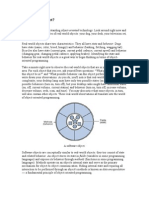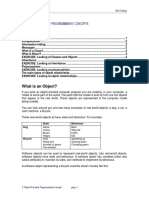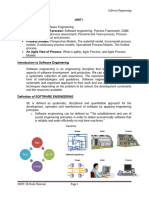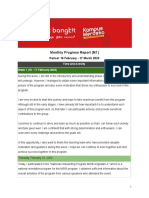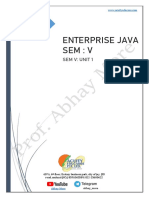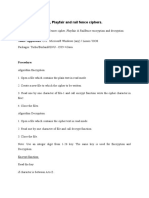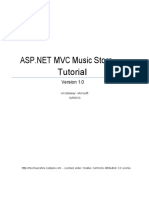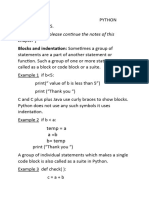0% found this document useful (0 votes)
137 views15 pagesCSC 302 (Introduction To OOP)
The document provides an introduction to Object-Oriented Programming (OOP), outlining its principles: encapsulation, abstraction, inheritance, and polymorphism. It explains the concepts of objects and classes, emphasizing the importance of state and behavior in real-world objects and how they relate to programming. Additionally, it discusses the benefits of using OOP, such as modularity, information-hiding, code re-use, and ease of debugging.
Uploaded by
Adnan Iliyasu MuhammadCopyright
© © All Rights Reserved
We take content rights seriously. If you suspect this is your content, claim it here.
Available Formats
Download as PDF, TXT or read online on Scribd
0% found this document useful (0 votes)
137 views15 pagesCSC 302 (Introduction To OOP)
The document provides an introduction to Object-Oriented Programming (OOP), outlining its principles: encapsulation, abstraction, inheritance, and polymorphism. It explains the concepts of objects and classes, emphasizing the importance of state and behavior in real-world objects and how they relate to programming. Additionally, it discusses the benefits of using OOP, such as modularity, information-hiding, code re-use, and ease of debugging.
Uploaded by
Adnan Iliyasu MuhammadCopyright
© © All Rights Reserved
We take content rights seriously. If you suspect this is your content, claim it here.
Available Formats
Download as PDF, TXT or read online on Scribd
/ 15









